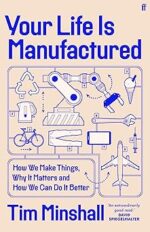Middlebank Consulting Group and Netstock to address supply chain challenges
Supply chain and value chain management consultancy Middlebank Consulting Group, has announced an expanded strategic partnership with Netstock, a global leader in inventory management and demand planning software. This collaboration aims to equip businesses with the tools and expertise necessary to stay resilient against today’s supply chain challenges while optimising business performance. In the current market landscape, businesses worldwide are grappling with the increasing complexity of managing inventory, responding to rapid demand changes, challenges with suppliers and staying competitive. Supply chain disruptions, outdated planning systems, and inefficiencies have created significant operational headaches. To remain competitive, organisations need innovative solutions that offer real-time insights and enable swift, informed decision-making. The strategic alliance between Middlebank Consulting Group (MCG) and Netstock brings together the deep consulting expertise of MCG with Netstock’s cutting-edge inventory optimisation platform, with built-in artificial intelligence (AI) functionality. This collaboration is aimed at empowering businesses to stay resilient against today’s supply chain challenges and set their operations on the right path to thrive in an ever-changing market. Netstock’s software has already demonstrated its value to companies worldwide, improving fill rates by 15%, reducing inventory levels by up to 25%, and improving demand forecasting accuracy by 50%. This partnership enables MCG to integrate these powerful capabilities, with strategic consulting to help businesses maximise their impact and ensure sustainable growth. “Having built a strong reputation for providing businesses with strategic guidance on the latest supply chain solutions which ultimately drive efficiency and cost savings, we are excited to have Netstock in our portfolio,” said Alan Win, Founder and CEO, Middlebank Consulting Group. “Through this partnership, we will enable organisations to fully harness Netstock’s capabilities and create agile, future-ready supply chains that respond to both current and emerging business needs.” Netstock’s innovative inventory and demand planning solutions are made smarter with AII, offering […]









